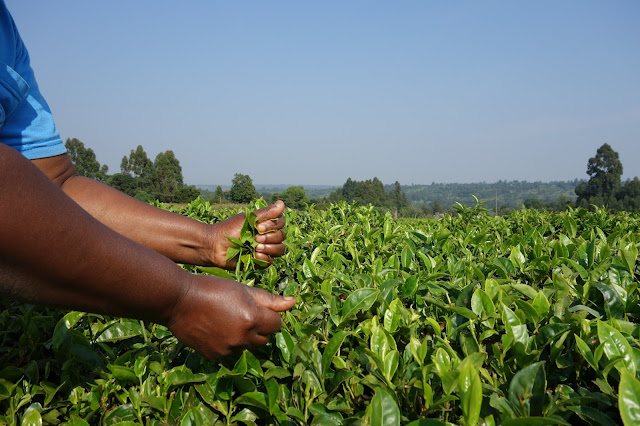 |
| The view of Khaylistsha from the train station. The Department of Coffee is clearly visible (the big red building) |
After the forced removal of 60,000 black and coloured
residents from the inner city area of Cape Town in the 1970s, the evicted residents
were forced to find elsewhere to settle. The black community moved to the
numerous townships that surrounded the city. Since then, little has changed and
the Western Cape still remains racially segregated twenty years after apartheid
ended. Inner city Cape Town remains a predominantly “white area”, whilst the
surrounding townships are nearly all “back areas”.
Khayelitsha is one of these areas and is the largest and
fastest growing township in the country. It has had a great deal of bad press
recently as it remains the only township with a growing rate of violent crimes
as well as being the township where Annie Dewani was murdered. The estimated
population is 400,000 with less then 5% being over 50 year of age and around
40% being under the age of 19. The population is young and majority of the new
residents are rural to urban migrants. Unsurprisingly, unemployment is
considerably high bringing with it problems with drugs and alcohol abuse.
Tours around
Khayelitsha and other townships are starting to pop up and are actually proving
to be rather popular with “adventurous” tourists. Volunteers have also started
to flock in to help out in township orphanages and schools. These initiatives
only target the “foreign tourist” market though and does little to breakdown
barriers with Cape Town residents.
Frustrated by the
divide and the problems faced in their township, three young lads from
Khayelitsha got together with the Ministry of Service Delivery to come up with
a solution using the skills and resources they had available to them. Vuyile
Msaku, Wongama Baleni, and Vusumzi Mamile set up the Department of Coffee as a
way of regenerating their area. The concept is simply to have a hub where
people from all backgrounds can meet over a coffee. Their slick look, strong
brand identity and even stronger coffee has proven to be a success with both
locals and Cape Townies alike. Based opposite Khaylitsha’s only train station
and on the bottom floor of the VPUU (Violence Preventions Through Urban
Upgrading) building, the boys are in an easily accessible location where they
can target local businesses, anyone coming off the train, and most importantly youth
seeking advice.
 |
| The prices at Department of Coffee are extremely reasonable (a cup of coffee in town = R22) |
The guys are all professionally trained baristas who use only the finest arabica beans from Ethiopia which are roasted locally and ground freshly using only the best equipment. The menu is extensive, offering a variety of coffee, teas, hot chocolate and muffins. Currently they are trying out a range of “red” beverages, made from loose Rooibos leaves that are used in the same way as you would ground coffee. The outcome is surprisingly sweet and refreshing, proving popular with visitors.
Like most good coffee shops, the Department of Coffee deliver to local businesses, the local court house, local hospital, and even make special Muffin Runs to children’s homes where they hand out muffins bought with money donated by their customers. The best bit is, their products are modestly priced, making it affordable for the average Khaylitshan resident. As history has shown, the most successful enterprises are the ones that know their market inside out, including knowing how to price their products appropriately.
It seems like
since they started a year ago Vuyile, Wongama, and Vusumzi have done some great
things, and it doesn't seem like they want to stop. They have started to hold
monthly CoffeeMobs which aims at bringing people from Cape Town to Khaylitsha
via a free train service. The event includes local music artists, arts and
crafts and of course great coffee. But more importantly it is a chance for the
people of Khaylitsha and Cape Town to mingle over a shared appreciation for all
things good. Last month a group of Cape Town cyclists decided to organise a
bikeathon from the city to the coffee hub that helped raise money for
regeneration projects in the township. Talking to Vuyile, I was told they were
hoping to expand by opening another Department of Coffee where they would have
a sit down service where they could also serve hot food.
Cape Town has been
named the Design Capital of the world 2013/14 and they are specifically looking
for designs that solve social, cultural and environmental issues. I can’t think
of a better nomination then the Department of Coffee. Their well thought out
concept has been marketed incredibly well. Through the use of facebook, local media and most importantly word of
mouth, the organisation has become something worth finding out about. This has
attracted attention from coffee loving Cape Townies and from the local youth
who so desperately need role models to look up to. The
idea has been successful for it’s simplicity and effectiveness to focus on
their main issue: “breaking down the wall between Cape Town and Khayelitsha.” Nothing
can stop these guys and from the looks of it, the Department of Coffee is bound
for great things.







































